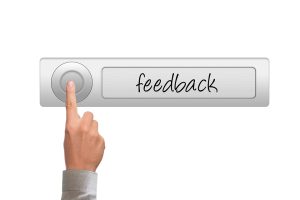The Power of Personalization: How Tailoring Your Email Marketing Can Boost Engagement
In today’s digital age, it’s no secret that email marketing has become a powerful tool for businesses to communicate with their customers. However, simply sending out mass emails to your entire mailing list may not always yield the desired results. This is where the power of personalization comes in. Tailoring your email marketing campaign to your individual customers can greatly boost engagement and lead to higher conversion rates.
What is Personalization in Email Marketing?
Personalization in email marketing involves creating more targeted and relevant content in your emails that speak directly to individual customers. This can be achieved by using various data points such as customer demographics, purchase history, browsing behavior, and email engagement patterns, to create a more personalized experience for the customer.
Why is Personalization Important in Email Marketing?
Personalization in email marketing is important because it helps to build stronger relationships with customers. Customers are more likely to engage with your emails when they feel that the content is relevant and speaks directly to them. Personalized emails also make customers feel valued and appreciated, which can lead to greater customer loyalty and retention.
Benefits of Personalization in Email Marketing
1. Higher Open and Click-Through Rates
One of the biggest benefits of personalization in email marketing is higher open and click-through rates. When customers receive an email that speaks directly to them, they are more likely to open and engage with it. This can lead to higher click-through rates, which in turn can lead to higher conversion rates.
2. Improved Customer Engagement
Personalization in email marketing also helps to improve customer engagement. When customers receive emails that are relevant and useful to them, they are more likely to interact with your brand. This can lead to increased brand awareness and customer loyalty.
3. Increased Revenue
Personalization in email marketing can also lead to increased revenue. When customers receive targeted and relevant emails, they are more likely to make a purchase from your business. This can lead to higher conversion rates and increased revenue for your business.
Tips for Personalizing Your Email Marketing Campaign
1. Collect Customer Data
The first step in personalizing your email marketing campaign is to collect customer data. This can include customer demographics, purchase history, and email engagement patterns. The more data you have about your customers, the better you can personalize your emails.
2. Segment Your Email List
Once you have collected customer data, you can segment your email list based on specific criteria. This can include things like customer demographics, purchase history, and email engagement patterns. By segmenting your email list, you can create more targeted and relevant content for your customers.
3. Personalize Your Email Content
When creating the content for your email marketing campaign, it’s important to personalize it as much as possible. This can include using the customer’s name in the subject line or creating content that speaks directly to their interests or needs.
4. Use Dynamic Content
Dynamic content allows you to create personalized email content that changes based on specific criteria. This can include things like the customer’s location or past purchase history. Dynamic content can help to create a more personalized experience for the customer.
5. Test and Refine Your Campaign
Finally, it’s important to test and refine your email marketing campaign over time. This can help you identify what works and what doesn’t, and make improvements to your campaign accordingly. Testing can also help you optimize your email content for better engagement and conversion rates.
Conclusion
Personalization in email marketing is a powerful tool that can greatly improve customer engagement and lead to higher conversion rates. By collecting customer data, segmenting your email list, and personalizing your email content, you can create a more targeted and relevant experience for your customers. Remember to test and refine your email marketing campaign over time for the best results.
FAQs:
1. What is the best way to collect customer data for email marketing?
There are a few ways to collect customer data for email marketing, including through website analytics, purchase history, and customer surveys. It’s important to collect as much data as possible to create a more personalized experience for your customers.
2. How often should I send out personalized emails to my customers?
The frequency of your email marketing campaign depends on your business and your customers. It’s important to strike a balance between staying top-of-mind and not overwhelming your customers with too many emails.
3. How do I create relevant email content for my customers?
To create relevant email content for your customers, it’s important to understand their needs and interests. This can be accomplished through customer surveys, website analytics, and past purchase history. Use this information to create content that speaks directly to your customers.
4. What is dynamic content in email marketing?
Dynamic content in email marketing allows you to create personalized email content that changes based on specific criteria. This can include things like the customer’s location or past purchase history. Dynamic content can help to create a more personalized experience for the customer.
5. How do I test and refine my email marketing campaign?
To test and refine your email marketing campaign, it’s important to regularly review your analytics and metrics. Look for patterns and trends in your data and make adjustments to your campaign accordingly. You can also conduct A/B tests to compare different email content and strategies.






